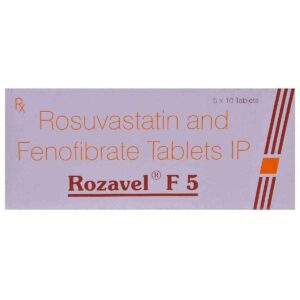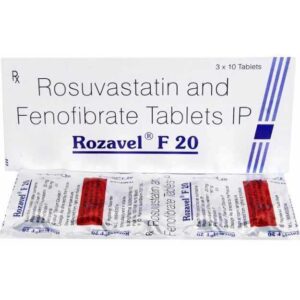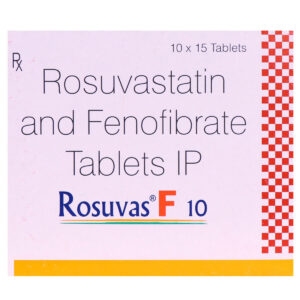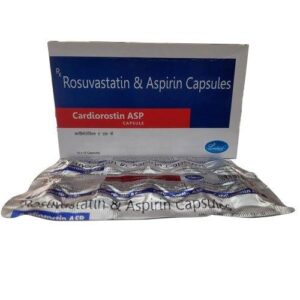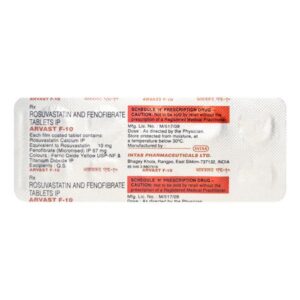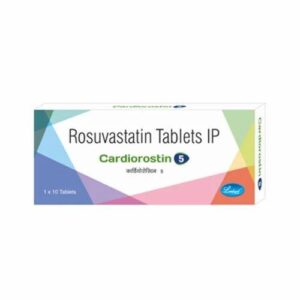ROSUVASTATIN AND FENOFIBRATE
ROSUVASTATIN AND FENOFIBRATE: Rosuvastatin and fenofibrate are two separate drugs used in combination to treat dyslipidemia, a condition characterized by abnormal levels of cholesterol and/or triglycerides in the blood.
Rosuvastatin is a member of the statin drug class and works by inhibiting an enzyme called HMG-CoA reductase. This enzyme plays a key role in the production of cholesterol in the liver. By blocking the activity of this enzyme, rosuvastatin reduces the production of cholesterol, thus lowering the levels of LDL (low-density lipoprotein) or “bad” cholesterol in the blood.
Fenofibrate, on the other hand, is a fibrate drug that acts by activating a receptor known as peroxisome proliferator-activated receptor alpha (PPAR-alpha). Activation of this receptor leads to an increase in the breakdown of triglycerides and a decrease in the production of VLDL (very low-density lipoprotein) or “bad” cholesterol.
The combination of rosuvastatin and fenofibrate is used when the dual action of lowering LDL cholesterol and triglycerides is necessary. It is typically prescribed in patients with mixed dyslipidemia or those at high risk of cardiovascular events.
The dose of rosuvastatin and fenofibrate can vary depending on the individual patient’s condition and needs. It is important to follow the prescribed dose and instructions provided by the healthcare professional.
Like all medications, rosuvastatin and fenofibrate may cause side effects. Common side effects of rosuvastatin include muscle pain, headache, nausea, diarrhea, and constipation. More serious but rare side effects include liver problems, muscle breakdown, and an increased risk of diabetes.
Similarly, fenofibrate can cause side effects such as stomach pain, indigestion, diarrhea, and headache. It may also increase the risk of gallstones and liver problems.
It is essential to inform healthcare providers about any pre-existing medical conditions or medications being taken to avoid potential drug interactions or adverse effects. Regular monitoring of liver function, lipid levels, and muscle enzymes may also be required during treatment with these drugs.



